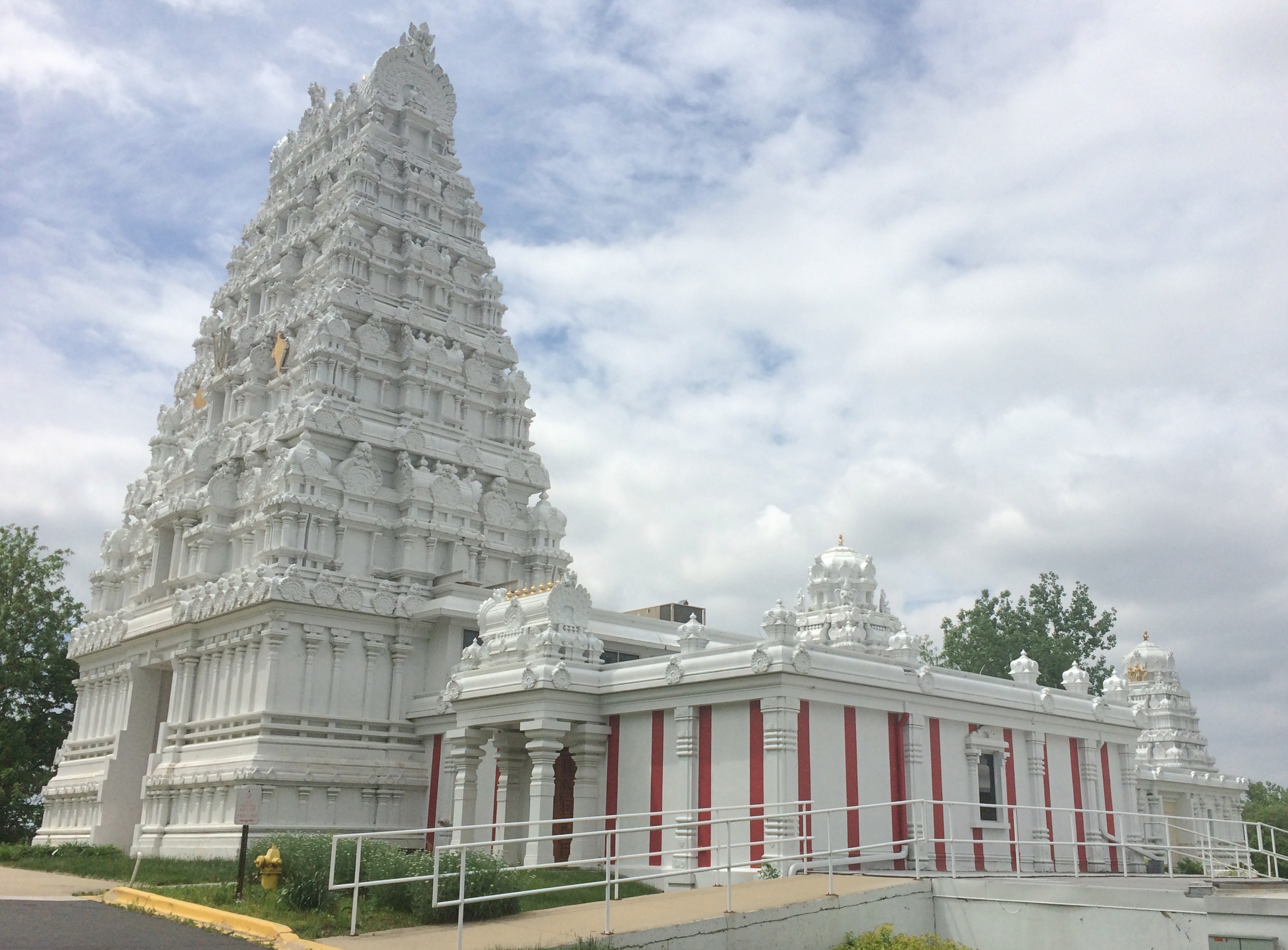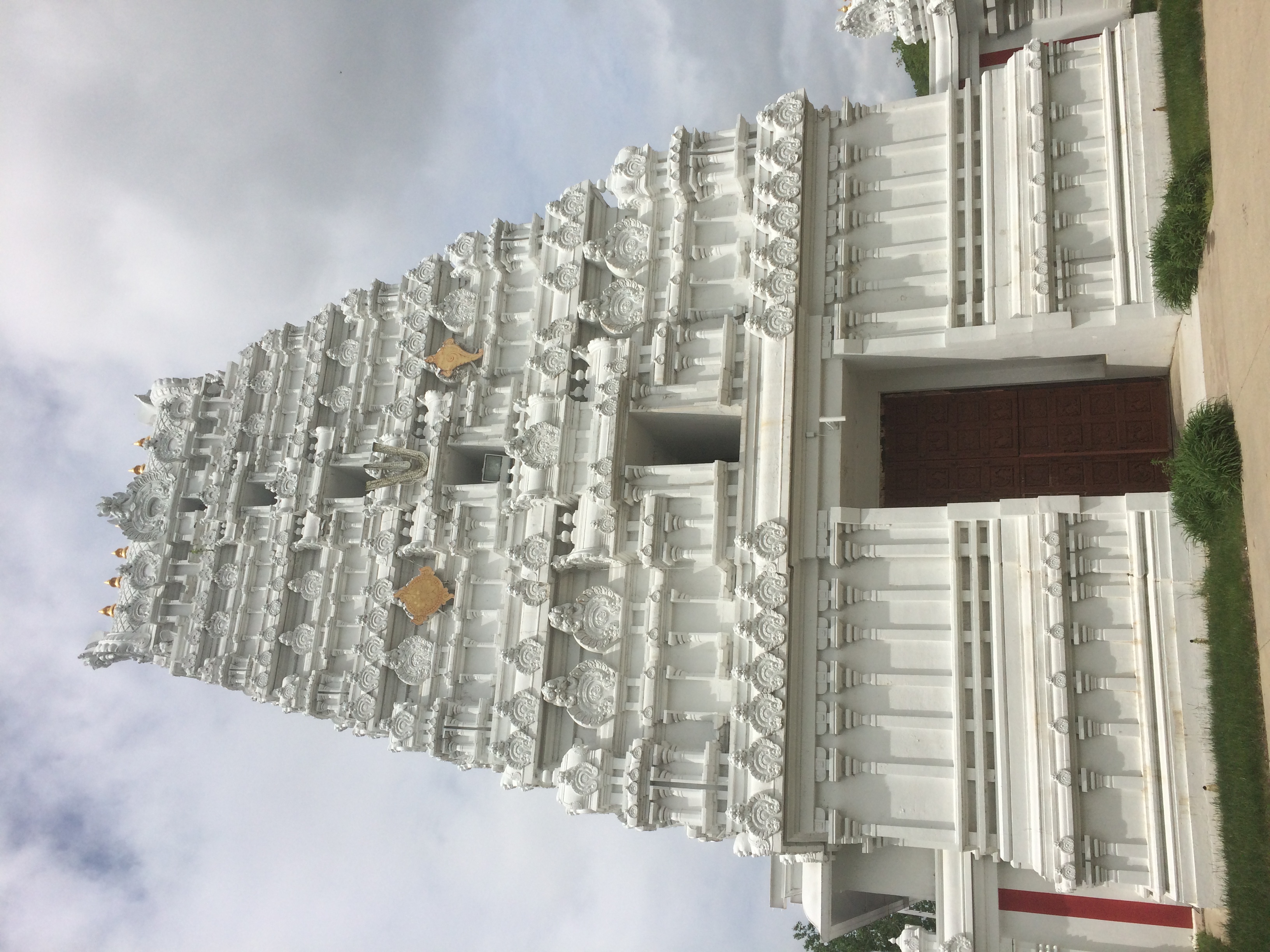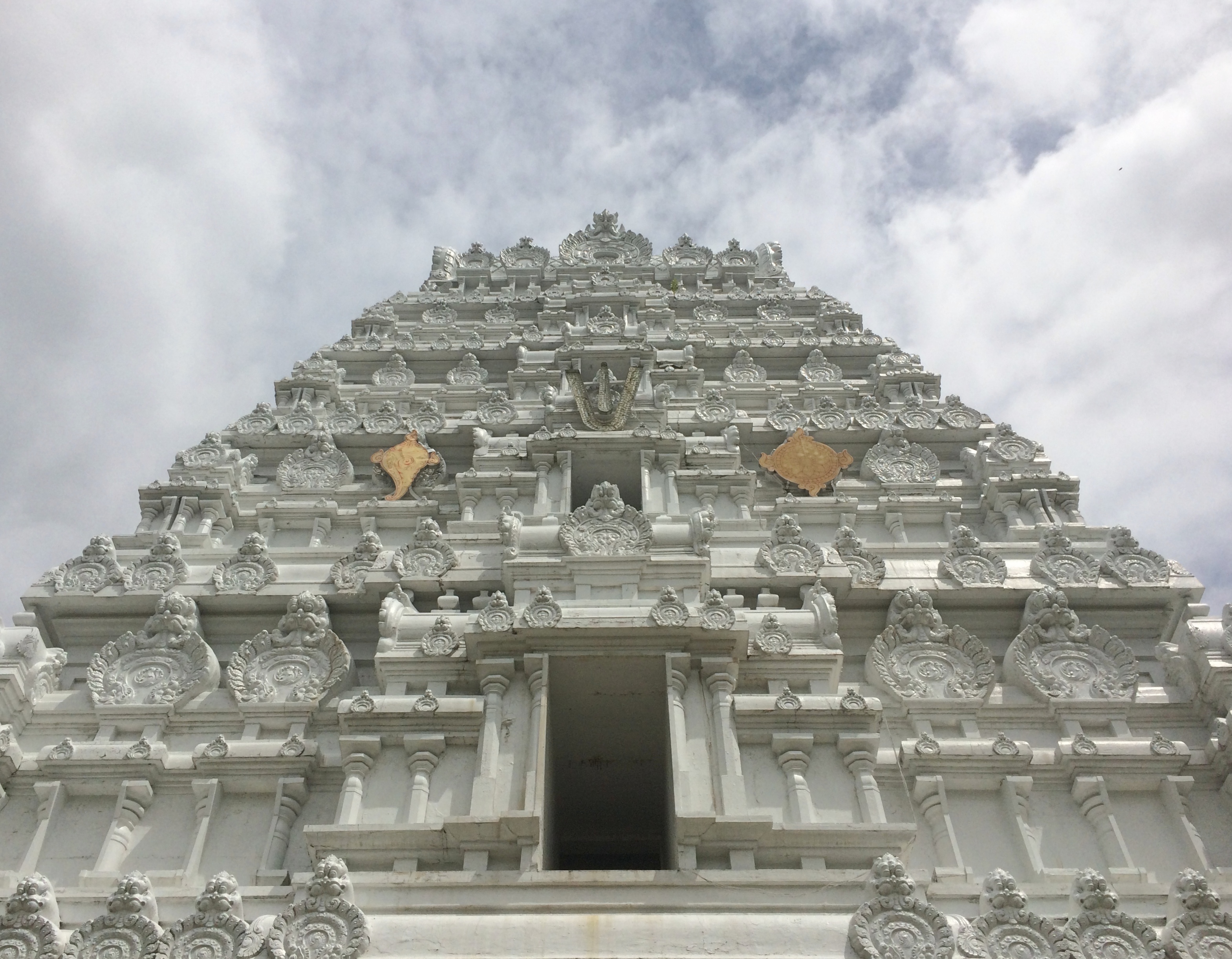On a pleasant Sunday in the spring, metro Chicago offers any number of things to see. One of them is the Hindu Temple of Greater Chicago.
The HTGC is in southwest suburban Lemont, tucked away on a moraine hilltop off Lemont Road, not far south of I-55. It’s a temple complex, actually, including Sri Rama Temple, Ganesha-Shiva-Durga Temple, a mediation center and other structures.
Entry meant a temperature check and a few questions by a slightly suspicious hired security guard. The interior features a fascinating array of religious artwork and devotional alcoves.
Next to Sri Rama is a structure called balipeetham, also styled bali peetam. As far as I can understand, it’s a place to ditch your unholy thoughts before entering the temple.
As hinted at by the temple’s generic name, it was an early — maybe the first, I haven’t confirmed that — Hindu temple in the Chicago area, founded in 1977 with the rising tide of immigration from the subcontinent. Many more temples have been established since then, of course. The first structure on the HTGC site was completed in 1985, according to this incredibly detailed and professionally written history of the temple at its web site. (There’s no reason such a history can’t be detailed and well written, it’s just that web-site histories tend to be otherwise.)
This is the outside of the first structure, the Ganesha-Shiva-Durga Temple. Its interior is interesting, but not nearly as elaborate as Sri Rama.
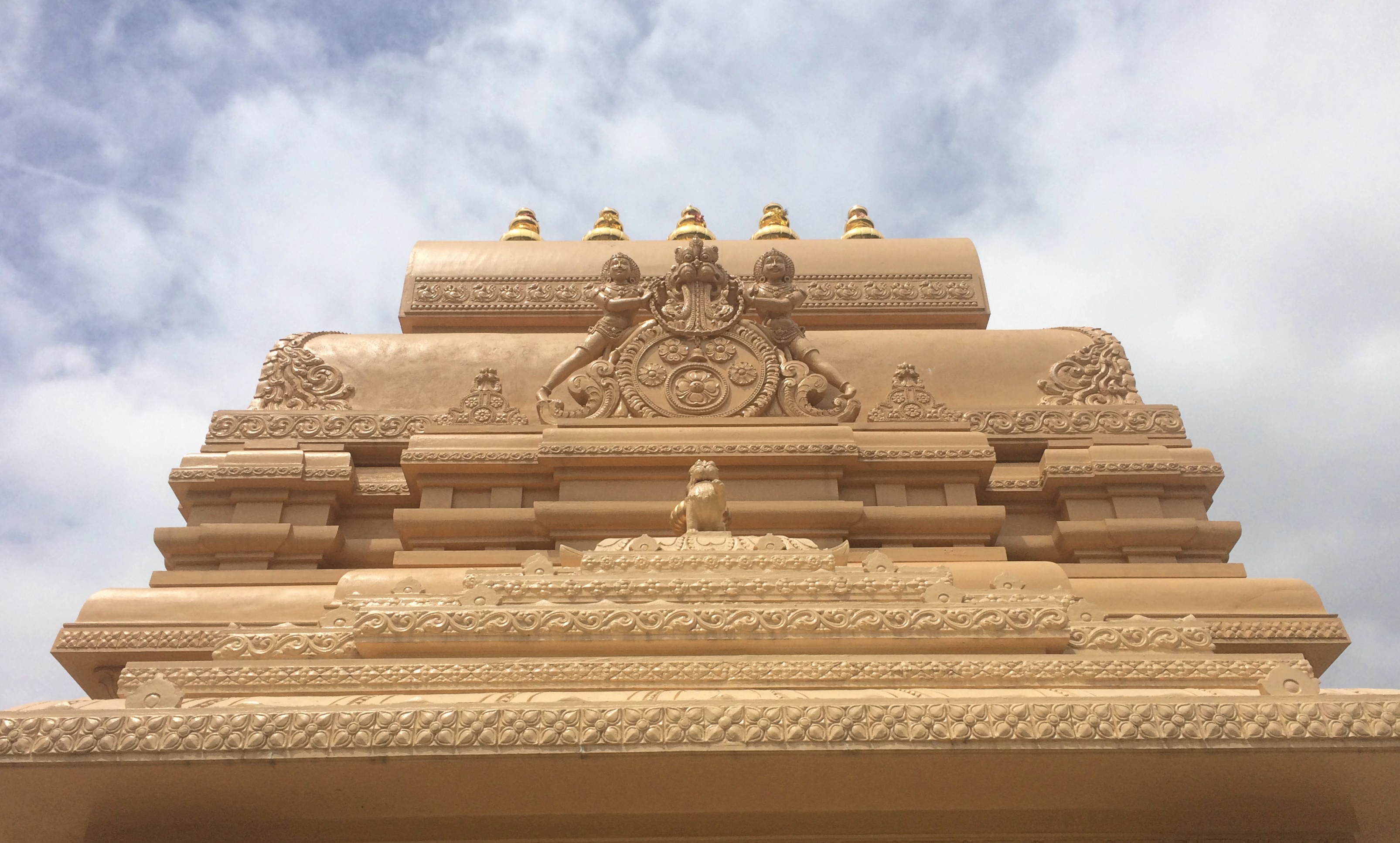
Elsewhere on the grounds are other structures. The one on the left protects a statue of Swami Vivekananda (1863-1902).
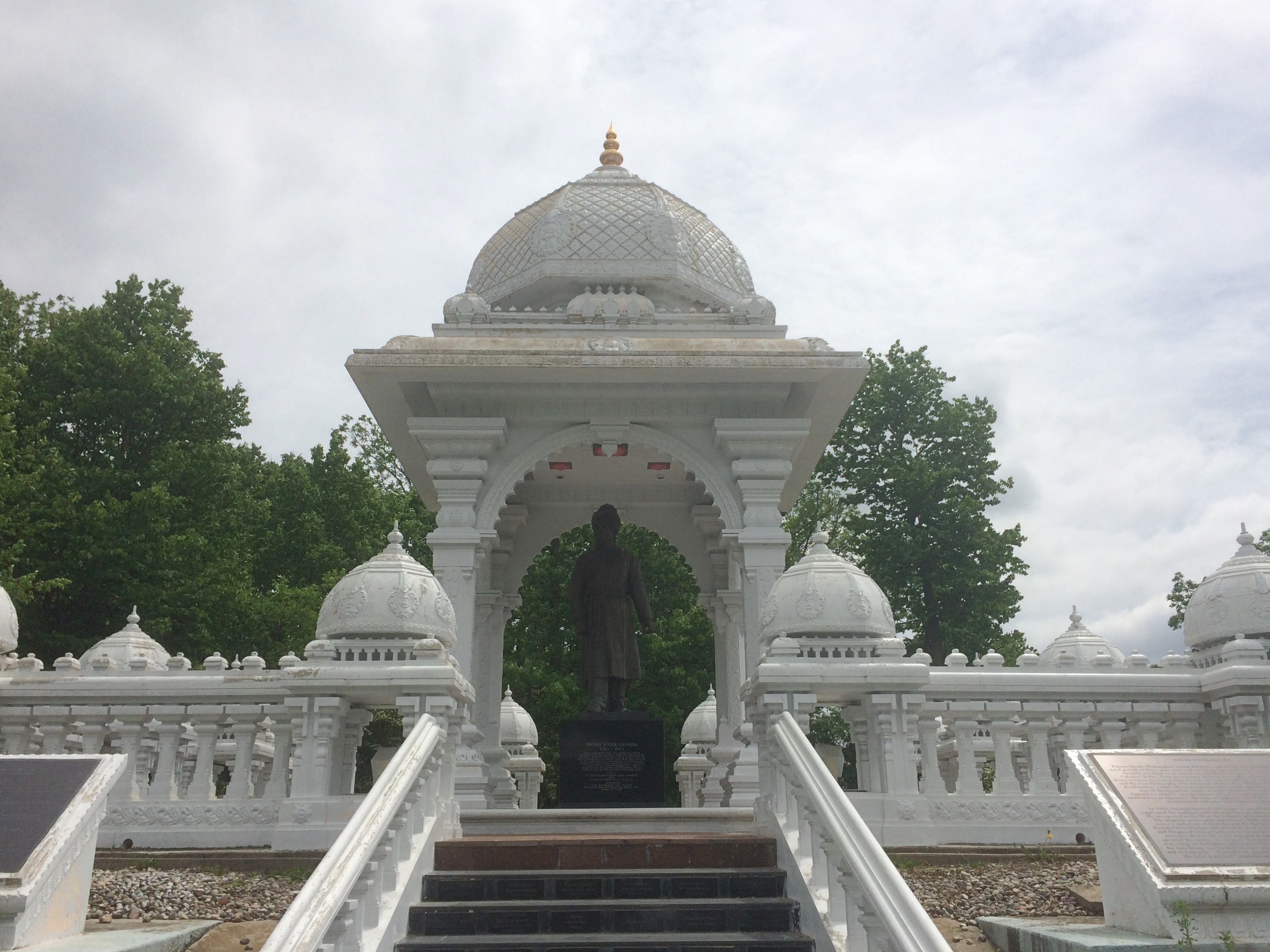
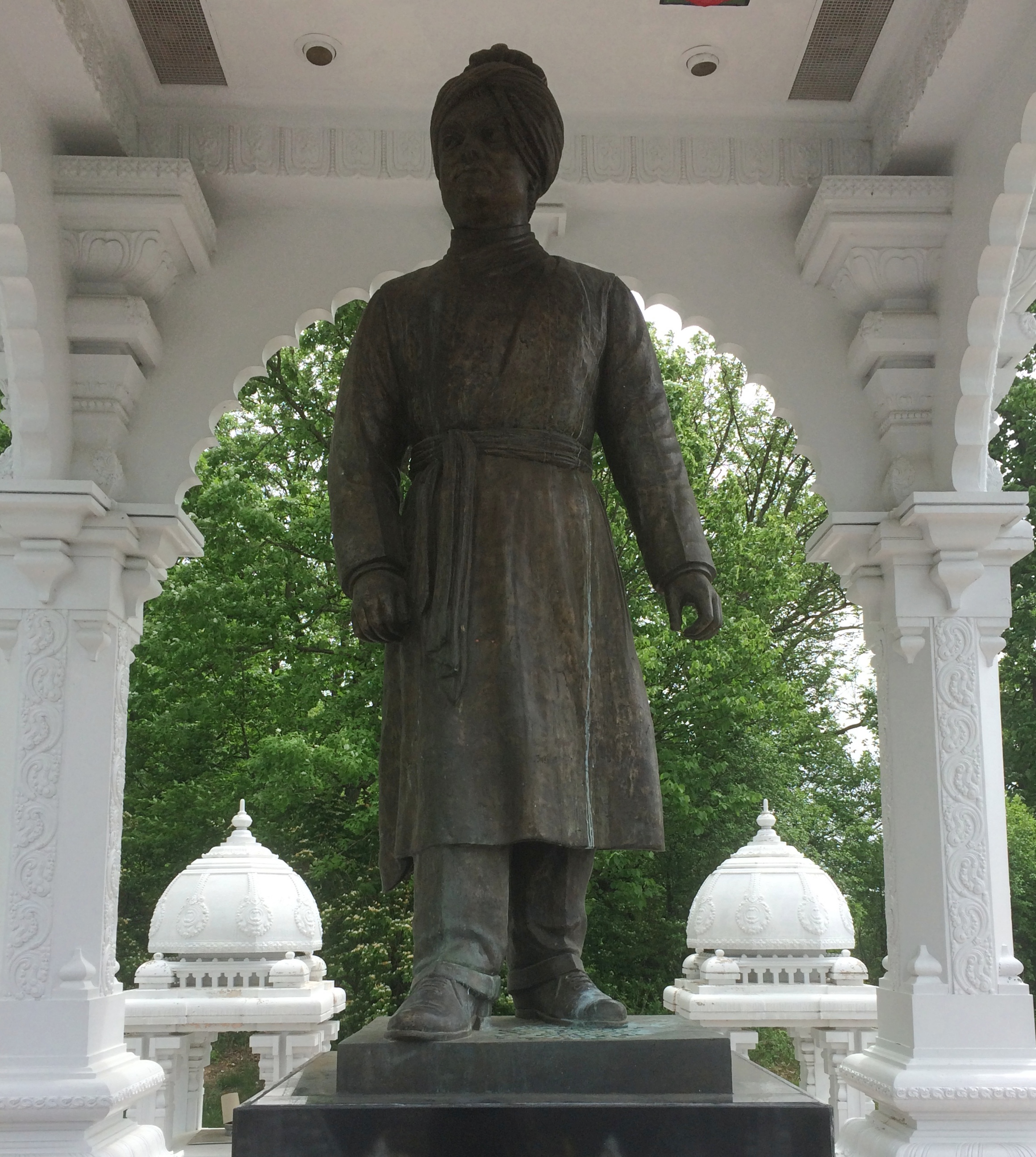
Swami Vivekananda is best known in this country — at least among people who know such things — for representing India at the 1893 Parliament of the World’s Religions in Chicago. Which, I have to add, seems like a remarkable event all by itself.
